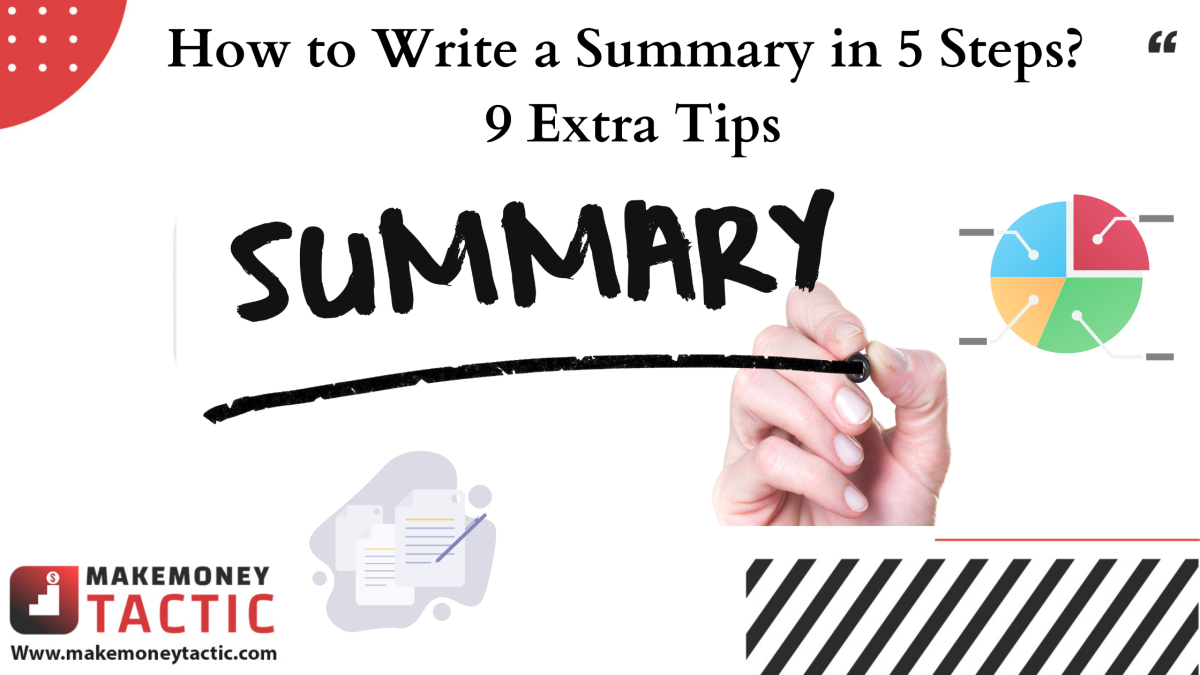A great summary can condense a range of information, and give readers an aggregation of the most important parts of what they’re about to read. Moreover, it provides a basic understanding of a piece of literature, media, or history. Next, we will explain how to write an effective summary for an established work.
What Is a Summary?
A summary is a brief of a larger work that gives the reader a full-scale understanding, like the abstract to a scientific paper, a description of a movie’s plot, or in the form of a novel synopsis. Summaries provide a shortened description of another work in the form of a paragraph, providing details that are enough for the reader to understand the subject of the summary while spotlighting the summary writer’s understanding of the subject.
Skilled students understand that summarizing is an important tool for college success. After all, you are always able to summarize a subject that you know even months or years from now. If you aren’t able to summarize a subject you already memorized all the facts about, then you have not learned it.
These skilled students can monitor their understanding of a text by summarizing it as they read. They understand that writing a one- or two-sentence summary of each paragraph after reading it is a good sign that they have understood it. If they can’t summarize the main idea of the paragraph then their comprehension has broken down and they need to use fix-up strategies to repair it.
When to write a summary (Purpose)?

There are many situations in which you might need to summarize an article or other source:
- A stand-alone assignment to show you had understand the material
- If you want to keep notes that will help you remember what you’ve read
- If you need to give an overview of other researchers’ work in a literature review
When you’re writing an academic text like an essay, dissertation, or research paper, you’ll need to combine sources in many ways. For example, you may need to use a brief quote to support your point, or paraphrase a few sentences or paragraphs.
But it’s often appropriate to summarize a whole article or chapter, especially if it is relevant to your research, or to provide an overview of a source before you analyze it.
The purpose of a summary is to provide readers with a short overview of the important details or interesting information without inserting a personal opinion.
How to write a summary in 5 steps only?

Follow these five steps outlined below to learn how to write a good summary.
Step 1: Read the text
Read the article more than once to make sure you’ve understood it. And it’s effective to read it through three stages:
- Scan the article quickly to get an idea about its topic and overall shape.
- Read it carefully, highlight important points and take notes as you read.
- Reread the article to confirm you’ve understood the key points and any particularly important or difficult passages.
Here are some tricks to help you identify the key points as you read:
- Start by reading the abstract since it contains the author’s summary of his work, and it tells you what to expect from the article.
- Get a good sense of what each part is about by paying attention to headings and subheadings.
- Read and then compare the introduction and the conclusion.
Step 2: Break the text into sections
The text will be more manageable and understandable If you break it down into smaller sections.
If this text is a scientific paper that follows a standard empirical structure, it will probably already be organized into clearly marked sections, generally including an introduction, methods, results, and discussion.
Other types of articles and essays may not be divided into sections, but most of them will be structured around a series of sub-points or themes.
Step 3: Spot the key points in each section
Now you need to go through each section and pick out its most important points.
A summary does not need paraphrasing every paragraph of the article. You just need to extract the essential points, leaving out what can be considered background information or supplementary details.
In a scientific article, here are some easy questions you can ask to identify the key points in each part.
Introduction
- What research questions or problems were addressed?
- Are any hypotheses formulated?
Methods
- What is the done type of research?
- How did you collect and analyze data?
Results
- What were the important findings?
- Was the hypothesis supported?
Discussion/conclusion
- What is the answer to the research question?
- How does the author explain the results?
- What are the implications of the results?
- Are there any important limitations or key recommendations?
If the article takes a different form, you should think more carefully about important points for the reader to understand its argument.
In that case, pay attention to the thesis statement which is the central claim the author wants us to accept, and which usually appears in the introduction—and the topic sentences that determine the main idea of each paragraph.
Step 4: Write the summary
Now that you know the key points the article needs to communicate, you should put them in your words.
To avoid plagiarism and show you’ve understood the article, you need to paraphrase the author’s ideas without copying and pasting any part of the article.
The best way to paraphrase is to put the article aside and write your understanding of the author’s key points.
Step 5: Check the summary and compare it to the article
Finally, read the article once more to ensure that:
- You’ve represented the author’s work
- You haven’t missed any important information
- The phrasing isn’t similar to any sentences in the original.
If you’re summarizing many articles as part of your work, it may be a good idea to use a safe and reliable plagiarism checker to double-check that your text is completely original and properly cited.
How to Write a Summary: 9 Extra tips

- When writing a summary, remember to make it in the form of a paragraph.
- A summary starts with an introductory sentence that states the the thesis statement which is the main point of the text.
- It is written in your words without any plagiarism..
- A summary contains the ideas of the original text without inserting any of your opinions, interpretations, deductions, or comments into a summary.
- Identify the significant sub-claims the author uses to defend the main point in order.
- No copy word-for-word of any passage from the essay.
- Cite the original article.
- If you copy-paste any paragraph, determine the work and the author, put “quotation marks” around the passage you chose.
- Finish your work with a sentence that “wraps” up your summary; often a simple rephrasing of the main point.





This indicates an intravascular process.
# 1 financial expert in the net!
thanks ❤